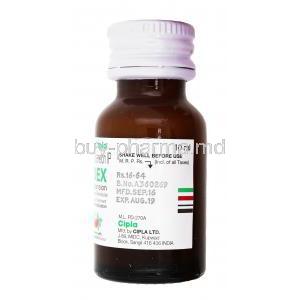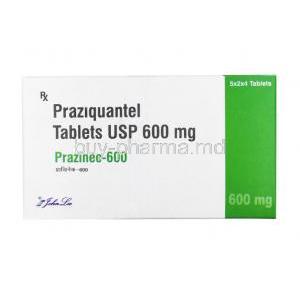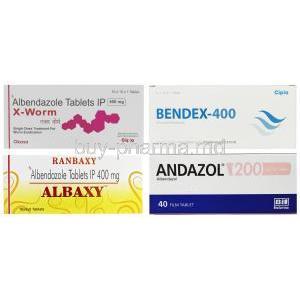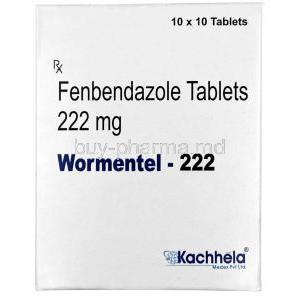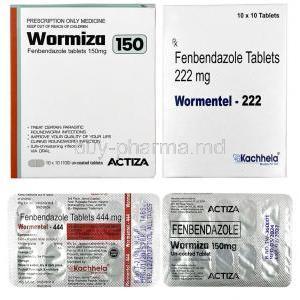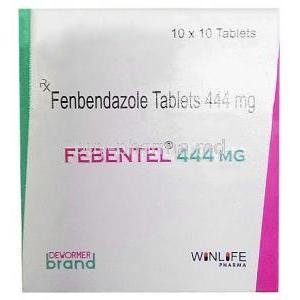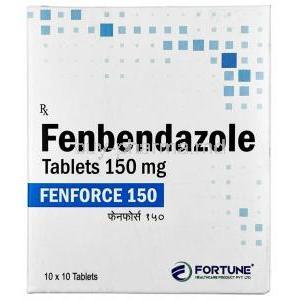Albendazole Suspension
- 1. Introduction to Albendazole Suspension
- 2. Composition and Formulation of Albendazole Suspension
- 3. Albendazole mechanism of action: How Albendazole Suspension Works
- 4. Therapeutic Uses of Albendazole Suspension
- 5. Off-Label Uses of Albendazole Suspension
- 6. Dosage and Administration Guidelines for Albendazole Suspension
- 7. Administration of Albendazole Suspension to Special Populations
- 8. Albendazole side effects
- 9. Warnings and Precautions for Albendazole Suspension
- 10. Contraindications for Albendazole Suspension Use
- 11. Albendazole interactions
- 12. Handling and Storage of Albendazole Suspension
- 13. Important Precautions for Safe Albendazole Suspension Use
- 14. Overdosage and Management of Albendazole Suspension
- 15. Careful Administration of Albendazole Suspension in Special Conditions
1. Introduction to Albendazole Suspension
Albendazole Suspension is a widely recognized anthelmintic medication primarily employed to treat parasitic infections. Its efficacy stems from its potent ability to eliminate parasitic worms that afflict the human body. The suspension form ensures ease of administration, particularly in children or individuals who struggle with tablet consumption.
Developed in the mid-1970s, Albendazole has become a cornerstone in parasitic infection management. Its utility ranges from localized intestinal infections to systemic parasitic diseases affecting multiple organs. The emergence of Albendazole revolutionized the treatment of parasitic infections, offering a targeted, effective therapy that reduced morbidity in regions where parasitic diseases are endemic.
Treating parasitic infections remains crucial as these diseases can lead to malnutrition, impaired growth in children, and severe organ damage if left untreated. Albendazole Suspension, due to its broad-spectrum efficacy, is indispensable in the global fight against parasitic diseases.
Albendazole for humans
Albenzadole is prescribed for treating worm infections by preventing the worms from absorbing glucose, leading to their loss of energy and eventual death.
2. Composition and Formulation of Albendazole Suspension
The Albendazole Suspension consists of a combination of inactive components that work together to enhance its effectiveness and durability.
Active ingredient:
Albenzadole is the ingredient that interferes with worms' survival strategies.
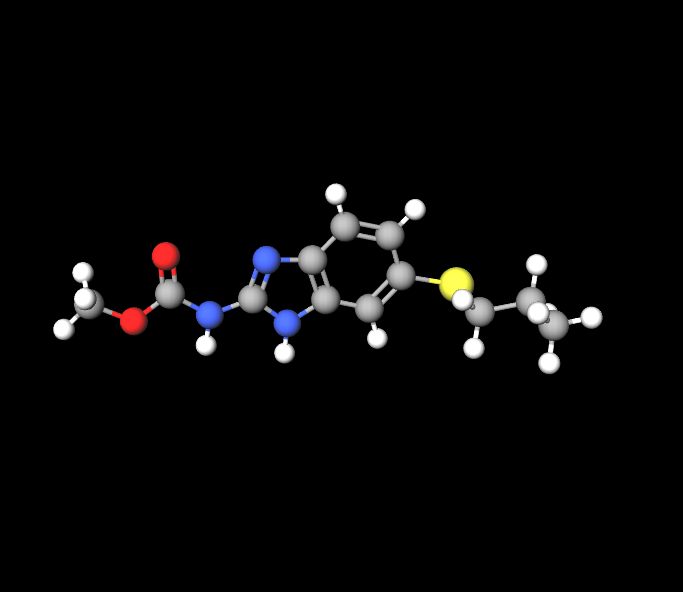
Inactive ingredients:
These commonly consist of additives, like preservatives and flavor enhancers, as stabilizers to improve the taste and longevity of the suspension. Albendazole Suspension comes in strengths, like 100 mg in 1 teaspoon ( to 0.2 teaspoons) or 200 mg in a dose size, depending on where you are and what the patient needs. It is supplied in sealed bottles for safety and to ensure it stays fresh while stored.
Albendazole and mebendazole
Albendazole and mebendazole are commonly recommended for treating worm infections, such as roundworms and hookworms. They can also be effective against tapeworm infections in the intestines.
Fenbendazole vs albendazole
Both albendazole and fenbendazole build supplies exhibit spectrum activity by targeting a wide range of helminths and protozoa parasites; however, their effectiveness varies depending on the specific types of parasites involved in the infection situation or infestation condition being addressed to counteract such health issues or conditions effectively and efficiently as targeted treatment protocols or regimens would suggest or indicate as optimal solutions, for better outcomes in managing these ailments successfully with the appropriate medications available for such instances requiring medical intervention from healthcare professionals, with expertise in this field of expertise.
Albendazole vs ivermectin
In comparison, to albendazole treatment outcomes show that ivermectin cures individuals and is well received with minimal side effects reported between the two drugs; however, when paired with thiabendazole, the parasitological healing rates are pretty similar, but adverse reactions are more common with thiabendazole usage compared to ivermectin use. Furthermore, studies indicate that ivermectin was ineffective against hookworm infections, whereas albendazole demonstrated a cure rate of 98% in cases.
3. Albendazole mechanism of action: How Albendazole Suspension Works
Albendazole functions by interfering with the structure maintenance of worms. It hinders the tubulin polymerization process – a step in formation. Microtubules play a role in parasite movement and essential functions like absorption and energy generation. By disrupting the parasites energy production and cellular integrity Albendazole effectively deprives the worms of sustenance leading to their demise. This mechanism is particularly effective against parasites. It also shows efficacy in treating systemic infections such as neurocysticercosis and hydatid disease.

4. Therapeutic Uses of Albendazole Suspension
Neurocysticercosis:
Hydatid disease:
Echinococcus granulosus is responsible for this infection, which mainly impacts the liver and lungs. Albendazole is a proven treatment option for these situations.
Intestinal parasites:
Albenzadole is known to be very efficient in combating a variety of parasites, like roundworms and hookworms.
Lymphatic filariasis:
This illness arises from worms living in the system and can result in lymphedema and elephantiasis; Albendazole is commonly used alongside other antiparasitic medications as a key component of the worldwide effort to eradicate this distressful ailment.
Cutaneous larva migrans:
Albendazole for pinworms
Albendazole can also serve as a remedy for combating pinworm infections caused by Enterobius vermicularis and treating conditions such as Trichuriasis (Trichuris trichina), Filiariasis, Ascariasis (Ascaris lumbricoides), and Giardiasis (Giardia duodenalis) that are resistant to metronidazole treatment.
5. Off-Label Uses of Albendazole Suspension
Toxocariasis:
While not officially sanctioned for this purpose, albendazole is commonly employed in treating the infection resulting from Toxocara species larvae.
Giardiasis:
Albenzadole has proven to be effective in managing giardiasis, an infection caused by Giardia lamblia. Despite not being the primary treatment choice.
Albendazole cancer
Research indicates that Albendazole could potentially impede the development of cancer cells; however, it should be noted that these discoveries are currently in the experimental phase.
Other parasitic infections:
Albenzadole has been utilized unofficially in infections that have not yet been formally approved by agencies to showcase its flexibility as an antiparasitic treatment option.
6. Dosage and Administration Guidelines for Albendazole Suspension
The recommended amount of Albendazole Suspension differs depending on the infection being addressed. Treatment for neurocysticercosis involves a dosage of 15 mg per kilogram per day for a duration ranging from 8 to 30 days, with doses spread out throughout the day. Intestinal infections can be treated with a dose of 400 mg for adults or a weight-based dose for children that's appropriate for their size.
Albendazole dose for adults
The typical dosage is 15 milligrams per kilogram of body weight daily, split into two doses and consumed with meals over a period of 8 to 30 days.
Albendazole dose for child
The typical daily dosage does not exceed 800 mg. Your doctor should determine the dosage for children based on their body weight at a recommended range of 5 10 mg/kg/day. Children may require attention when considering dosage adjustments to ensure safety and effectiveness in immunocompromised patients.
Albendazole with or without food
Administer the suspension and food to improve absorption without any preparations like fasting or enemas before or after using albendazole treatment procedures. Take this medication during meals, preferably with food rich in fats, for better absorption into the body. A diet rich in fats is particularly suggested to enhance the effectiveness of Albendazole medication administration.

7. Administration of Albendazole Suspension to Special Populations
7.1 Administration to Children
To administer medication safely to children, safety concerns often lead to weight-adjusted dosing being required. To ensure safety and efficacy, the effectiveness of treatment is maintained. It is recommended to monitor for side effects regularly, with a particular focus on gastrointestinal issues, particularly gastrointestinal disturbances.
7.2 Administration to Elderly Patients
Older individuals might experience issues with their liver or kidney functions, which require observation of liver enzymes and consideration of reducing dosage to avoid any effects.
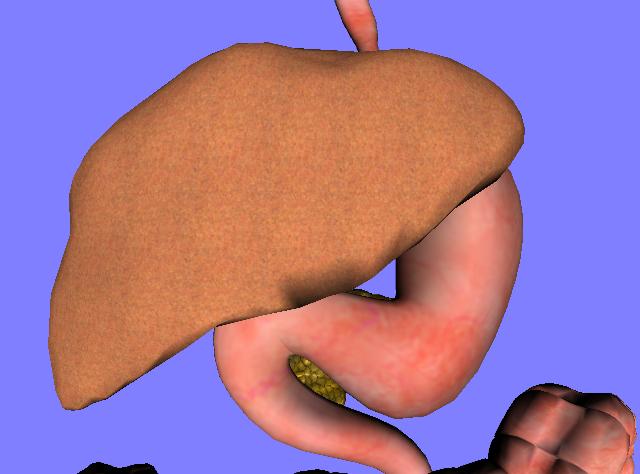
7.3 Administration During Pregnancy and Breastfeeding
Alarming reports suggest Albendazole could pose risks of birth defects during pregnancy and should be used cautiously then if deemed essential; it might also transfer traces of the medication to the baby through breastfeeding without causing any harm so far.
8. Albendazole side effects
8.1 Common Side Effects
- Nausea, vomiting, and diarrhea
- Headache and dizziness
- Temporary hair loss (alopecia)
8.2 Serious Side Effects
- Hepatotoxicity: Elevated liver enzymes and liver damage may occur with prolonged use.
- Bone marrow suppression: Pancytopenia and leukopenia are rare but serious effects.
- Severe allergic reactions: Anaphylaxis and angioedema have been reported in hypersensitive individuals.
Albendazole alternative
- Vermox
- Pyrantel
- Nitazoxanide
- Albenza
- Ascarel
- Pinworm Medicine
9. Warnings and Precautions for Albendazole Suspension
When administering Albendazole Suspension, it's important to consider factors and pay close attention to monitoring the functioning of vital organs. There is a need to regularly monitor liver function due to the drug's potential for liver toxicity. Precautionary liver enzyme tests should be done before and during treatment to catch any signs of liver damage. Equally important is the assessment of blood counts as Albendazole may cause bone marrow suppression leading to conditions like leukopenia or pancytopenia, with prolonged use. It's important to have blood tests to catch these conditions and avoid more serious problems down the line. If someone already has liver issues and is taking Albendazole Suspension, they must be careful as it could make their liver problems worse. In these situations adjusting the dosage or trying treatments might be suggested. If any bad reactions happen like an increase, in liver enzymes or signs of bone marrow suppression treatment should be stopped away and the person should see a doctor immediately.
Foods to avoid while taking albendazole
Be cautious about consuming grapefruit or grapefruit juice when taking this medication unless your doctor or pharmacist approves it as safe for you to do so. Grapefruit may heighten the risk of experiencing side effects from this treatment regimen. Consult with your healthcare provider or pharmacist for information and guidance on this matter.

10. Contraindications for Albendazole Suspension Use
Albendazole Suspension should not be used in situations, the significant being if a person is allergic to Albendazole or other similar medications like benzimidazole derivatives, as it can lead to severe allergic reactions such as anaphylaxis or angioedema which require immediate medical attention. Seeking advice from a healthcare provider is crucial for individuals with liver issues, as Albendazole could potentially worsen liver function. It is also advised to avoid using Albendazole during the stages of pregnancy due to harmful effects, on the developing baby. Women who are in the age range where they can bear children should take a pregnancy test before beginning any treatment. Make sure to use birth control methods while undergoing therapy to avoid any unintended exposure risks.
11. Albendazole interactions
Albendazole Suspension may interact with various medications, necessitating adjustments or monitoring when used concomitantly. Interactions with other antiparasitic drugs may either potentiate or reduce the efficacy of treatment. Careful consideration should be given to combination therapies to avoid unwanted outcomes.
Albendazole interacts with anticonvulsants such as phenytoin and carbamazepine, both of which can reduce the concentration of Albendazole in the bloodstream. This may necessitate dosage adjustments to maintain therapeutic efficacy. On the other hand, corticosteroids may enhance the absorption of Albendazole, increasing its effectiveness in treating parasitic infections, particularly in systemic conditions such as neurocysticercosis.
The potential for interaction with anticoagulants should also be carefully monitored. Albendazole may increase the risk of bleeding when used in conjunction with these drugs, requiring careful monitoring of coagulation parameters during treatment.
12. Handling and Storage of Albendazole Suspension
Albendazole Suspension needs to be kept in a dry spot where it is shielded from sunlight and heat exposure. To maintain its effectiveness and stability, properly handle it by giving it a good shake before every use for even distribution of the active ingredient. It's important not to use Albendazole Suspension after it has expired because it might not work well or could cause side effects.
13. Important Precautions for Safe Albendazole Suspension Use
During the course of treatment with Albendazole Suspension, it is vital to monitor liver enzymes and blood counts regularly. This precaution helps mitigate the risk of hepatotoxicity and bone marrow suppression, two of the most serious potential side effects of prolonged therapy.
Proper use of Albendazole is essential to prevent drug resistance, a growing concern in the management of parasitic infections. Patients should be advised to follow the prescribed dosing regimen carefully, completing the full course of therapy even if symptoms improve before the treatment is complete. Premature discontinuation may result in suboptimal treatment outcomes and contribute to resistance development.
14. Overdosage and Management of Albendazole Suspension
Taking too much Albendazole Suspension can lead to stomach-related issues like stomach pain and feeling sick or throwing up; in some situations, it can harm the liver and blood system as well. Treating an overdose usually involves managing symptoms; using activated charcoal to lessen drug intake if taken recently is an approach. Hospital stay is often necessary, for cases of overdose to provide care like fluids through veins and keeping a close check, on liver and kidney health.
15. Careful Administration of Albendazole Suspension in Special Conditions
Patients who have issues with their kidneys or liver need to adjust the dosage when taking Albendazole Suspension. There might be a need for lower doses or different medications for those with liver problems to avoid making the liver condition worse. If someone has had reactions, to benzimidazoles before such individuals should steer clear of Albendazole as it could lead to hypersensitivity reactions. If there are no treatment options some doctors may consider desensitization protocols only under close medical supervision.
Albendazole Suspension FAQ
- How to take albendazole for deworming?
- How long does it take albendazole to kill worms?
- What should you expect after taking albendazole?
- How to take albendazole for deworming in adults?
- What is albendazole?
- How does albendazole work?
- What is albendazole used for?
- Albendazole or mebendazole which is better?
- How to take albendazole single dose?
- How long does it take for albendazole to work?
- Albendazole tablet how to take?
- How fast does albendazole work?
- When can i drink alcohol after taking albendazole?
- What if albendazole doesn't work?
- How long does albendazole stay in your system?
- Can i buy albendazole over the counter?
How to take albendazole for deworming?
The typical dosage is 400 milligrams (mg) taken daily with meals for 28 days (which constitutes one cycle).
How long does it take albendazole to kill worms?
The duration required for albendazole (Albenza) to eliminate the worms varies from person to person, as per studies indicating that it may take 7 days for the medication to eradicate tapeworm infections in the brain while treating tapeworm infections in other body parts like the liver might necessitate a longer period for recovery.
What should you expect after taking albendazole?
Feeling sick to your stomach or throwing up might happen alongside tummy aches or headaches, and temporary hair thinning could happen, too, with this medicine.If any of these things stick around or worsen, give a heads-up to your doctor or pharmacist.Just keep in mind that your doctor prescribed this medication because they believe that the good it does for you outweighs the chance of side effects cropping up.
How to take albendazole for deworming in adults?
Adults and children who weigh 60 kilograms or more should consult their doctor to determine the dosage based on body weight recommendations.The usual dosage is 400 milligrams taken daily with meals, for a period ranging from 8 to 30 days.
What is albendazole?
Albenzadole is prescribed to combat infections caused by worms. It prevents the worm from absorbing sugar (glucose), which ultimately causes it to lose energy and perish.
How does albendazole work?
This medication is also prescribed for treating hydatid disease affecting the liver and lungs, as well as infections caused by dog tapeworms in the peritoneum region of the body. Albendazole is utilized to combat worm infections by disrupting their ability to absorb glucose or sugar, effectively leading to a loss of energy that eventually results in their demise.
What is albendazole used for?
The FDA has approved albendazole for treating infections caused by worms in humans. It is a medication used to treat conditions like echinococcosis in the liver and other organs caused by the larval stage of the dog tapeworm Echinococcus granulosus.
Albendazole or mebendazole which is better?
Altering the dosage of albendazole every 6 months proved to be more successful than using mebendazole plans, making it a top pick for managing the three geohelminths.
How to take albendazole single dose?
The typical dosage is 400 milligrams (mg) alongside meals, for a period of 28 days (referred to as one cycle).
How long does it take for albendazole to work?
The duration of albendazole (Albenza ) use to eliminate the worms may vary from person to person.According to research, albendazole (Albenza ) may be effective in eradicating brain tapeworm infections within a week, whereas treating tapeworm infections in body regions like the liver might require a longer time.
Albendazole tablet how to take?
It's typically recommended to take it with meals two times for varying durations depending on the condition being treated: 8 to 30 days for neurocysticercosis and 28 days followed by a 14-day pause repeated for three cycles for cystic hydatid disease treatment.
How fast does albendazole work?
After you take Albendazole 400 MG Tablet, it usually takes 2 to 3 hours for it to start working.
When can i drink alcohol after taking albendazole?
It's advisable to steer clear of alcohol when you're on this medication to reduce the chances of liver damage, as both alcohol and albendazole (Albenza ) can negatively impact the liver.
What if albendazole doesn't work?
If your condition doesn't get better after completing the treatment, with this medication or if it worsens at any point in time make sure to consult your physician, for guidance and assessment.
How long does albendazole stay in your system?
Albenzadol 400 MG Tablet can stay effective in your system for around 2 to 3 days.
Can i buy albendazole over the counter?
You can only get this medication if your doctor prescribes it for you.






